On a steep, wooded site in western North Carolina, architects Emma Fuller and Michael Overby clustered eight pavilions to form a house that wraps around a central patio and reaches out to views of Lake James and the Appalachian Mountains beyond. Designed for Overby’s parents, who moved back to North Carolina after retiring from busy careers in Florida and then Seattle, the modestly sized house—just 2,750 square feet—uses the hillside to protect itself from temperature fluctuations and reduce its energy consumption. The architects met at Cooper Union’s School of Architecture, then worked for different firms—Fuller for Diane Lewis and Overby for Reiser+Umemoto—before establishing their own practice in New York in 2019. So far, their firm has worked mostly on residential projects and galleries, including a small design studio on an alley in Richmond, Virginia, where Fuller comes from.
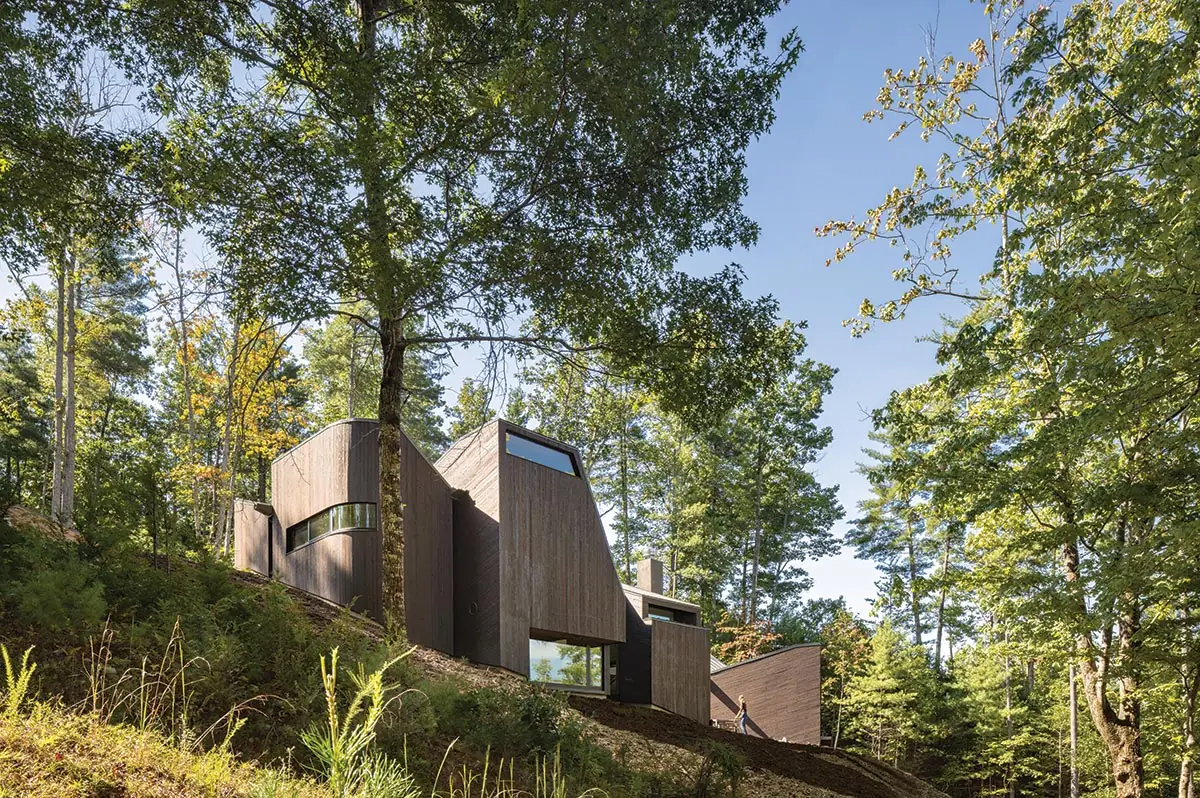
Windows are carefully placed to frame views of the lake and woods. Photo © Paul Warchol, click to enlarge.
The Nebo House, their first ground-up project, offered Fuller and Overby an opportunity to address the push and pull of a challenging site and the needs of clients they knew well but had never worked for. Though still active and in good health, Kathy and Ken Overby wanted a house that allowed them to live mostly on one floor, with guest rooms on an upper level. “We knew it would be modern but wanted it to be warm and comfortable,” says Kathy Overby, who had been a brand manager for Boeing. Designing for his parents was a process of discovery for Overby. “I didn’t know my dad was so detail-oriented,” he says with a laugh. His father, who had been a firefighter and a golf pro, wanted a house that would be easy to maintain. So the architects designed a tight footprint and used materials like cypress siding, concrete floors, and stone paving that are durable and age well.
The site drops 100 feet from the top of the driveway to the water’s edge. To anchor the house to the hillside, Fuller and Overby inserted a pair of concrete retaining walls diagonally across the plot, establishing the south and west edges of the structure. The architects liken the gouge in the earth to a hunter’s blind that opens to the patio and views of the lake. A third retaining wall bolsters the upper edge of an entry court, with a two-car garage hidden behind it. From this court, the cypress-clad pavilions with zinc standing-seam roofs appear to be a village of strongly articulated volumes. To find the front door—recessed behind a pavilion with a sharply angled roof—you walk down a set of stone steps and turn toward the lake.
You enter on an upper level, where guest rooms and a sitting area are located, and you’re greeted by a big view out to the lake and a peek through a narrow clerestory to the sky. Playing off views out and up is a third source of illumination: a trapezoidal skylight at the top of the steeply roofed pavilion.
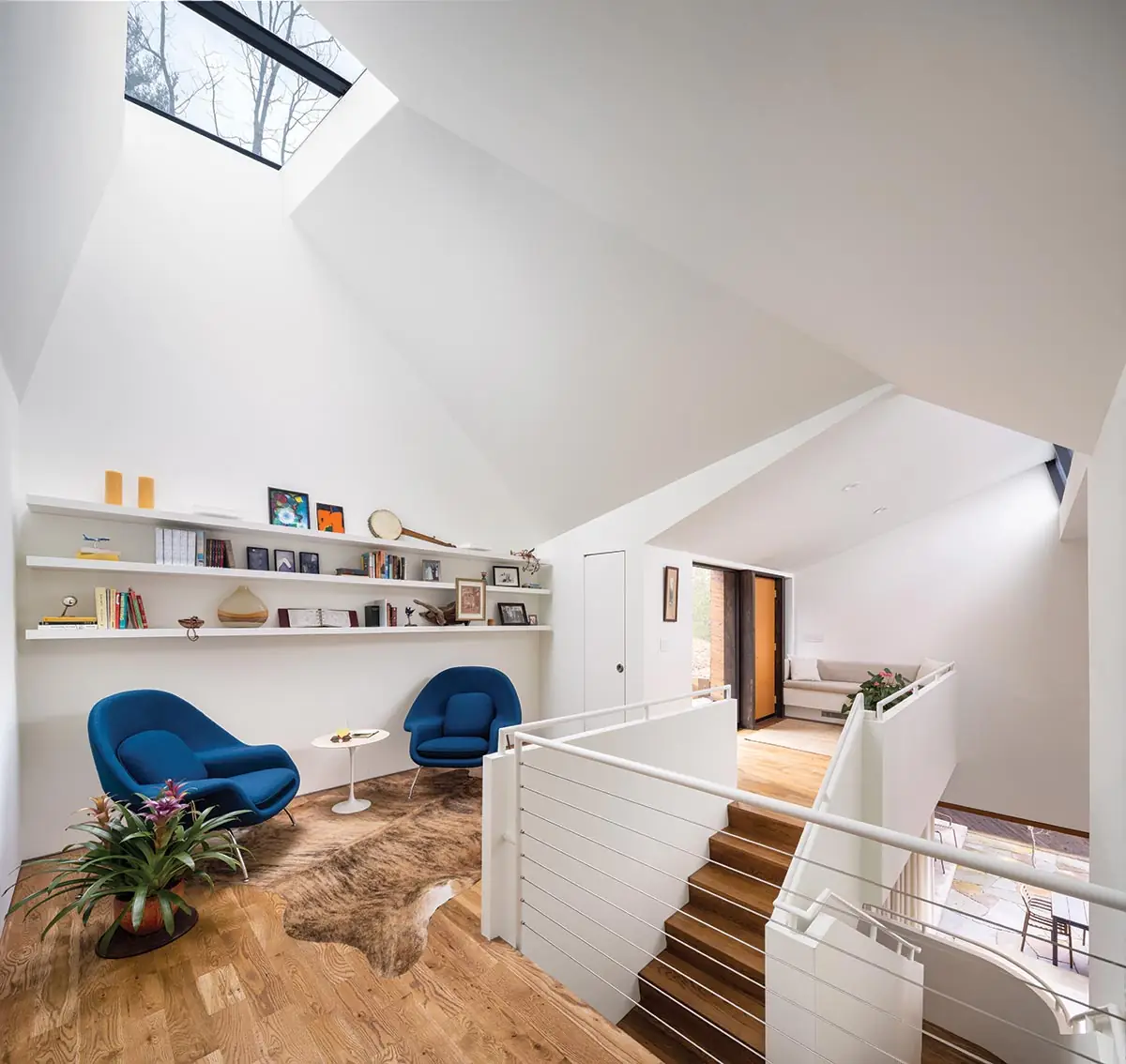
1
Public space flows from a sitting area on the upper level (1), down a cantilevered stair (2), and to the kitchen and living room (3). Photos © Paul Warchol
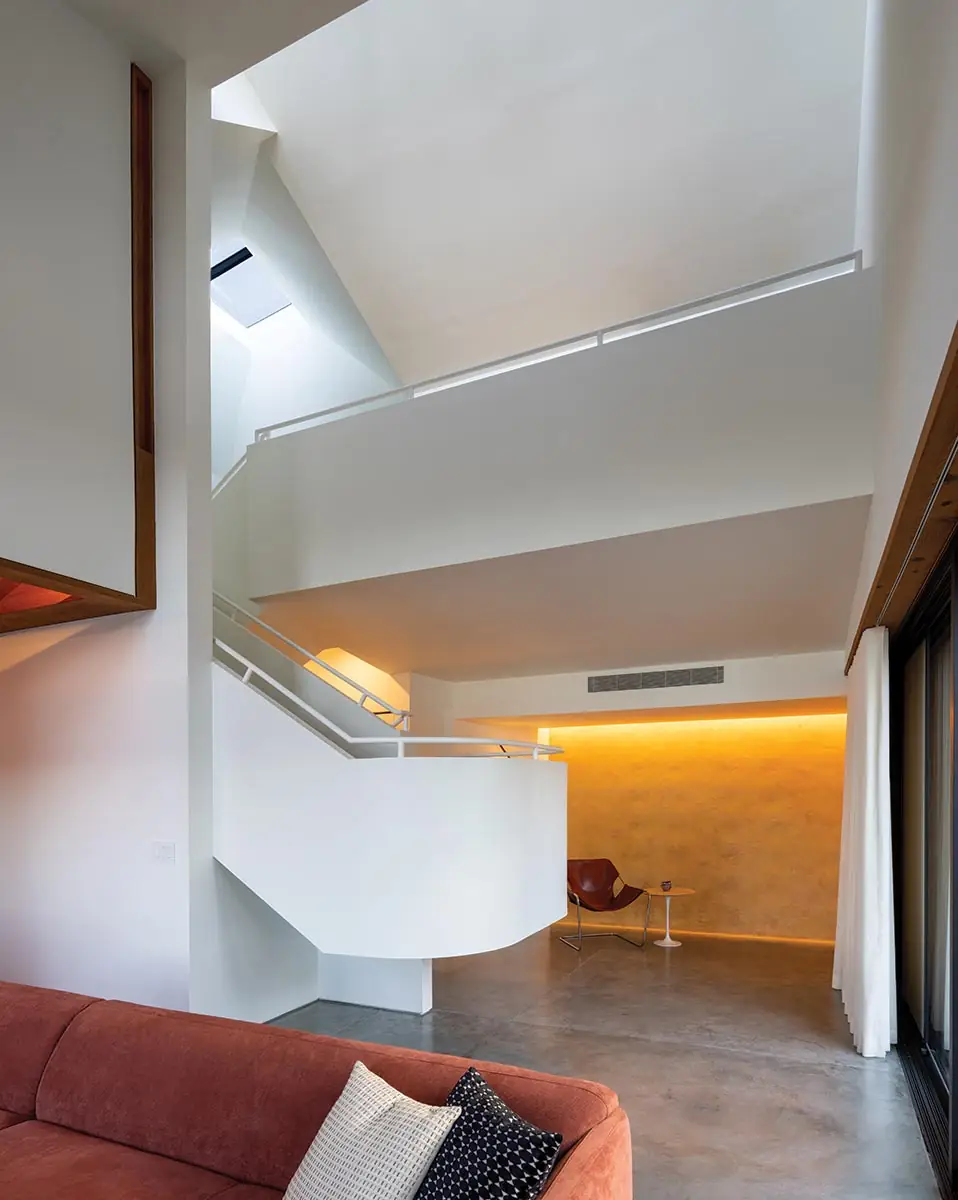
2
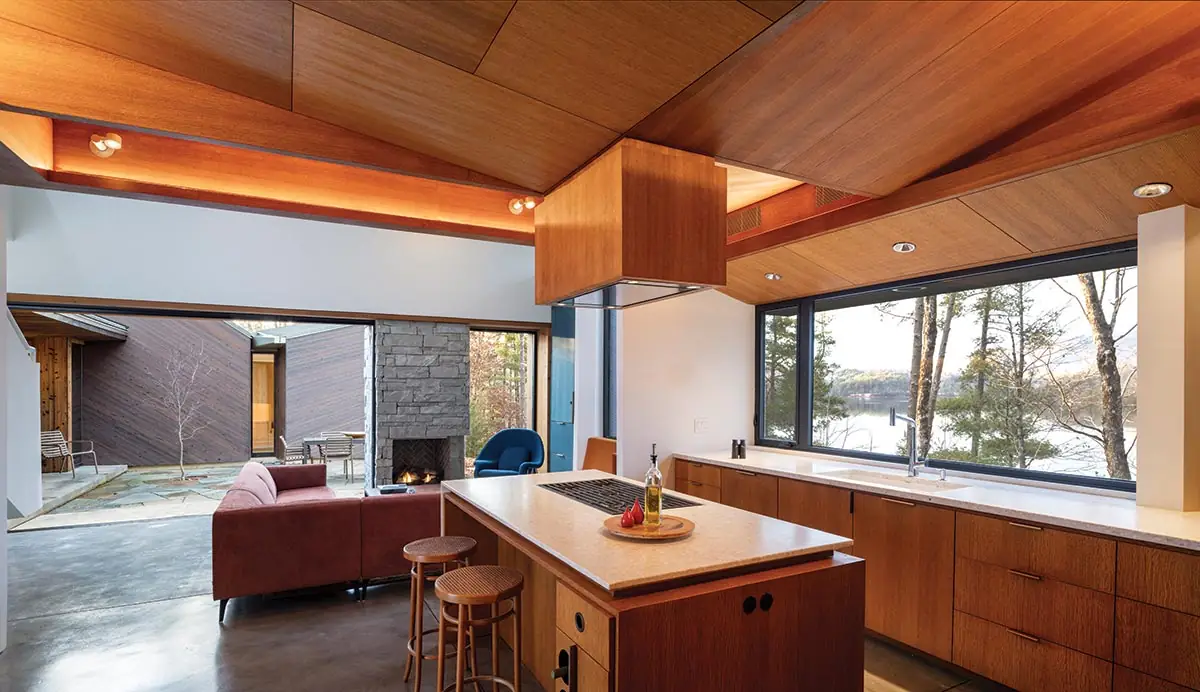
3
The stair that takes you down to the main floor acts as an element that both divides space and connects it. With its Corbusian curves, cantilevered landing, thin pipe railing, and cool white color, the stair—as well as the sculptural interplay of spaces—recalls the house that Charles Gwathmey designed for his parents in Amagansett, New York, in 1965. The stair’s form and location make it the hinge around which the house revolves—with the living room and kitchen to the north, a service spine to the south, and the patio to the west.
Standing on the landing, you can appreciate the fluid character of the ensemble, as well as the dialogue created between the whole and its details. “We layered spaces,” says Fuller, “so you can look at and through them.” Instead of walls, changes in ceilings and materials demarcate rooms and functions. For example, the architects designed a faceted white oak ceiling over the kitchen, giving it a separate identity within the flowing plan. In the adjacent living room, a wall of built-in cabinets, stained various shades of blue, and a cantilevered banquette with orange upholstery show how colors play an important part in the ambience. A stone-clad fireplace, charred cypress siding on the exterior, white oak flooring on the stair, and a Moroccan plaster called tadelakt applied to the walls of the master bathroom all add texture and warmth to the architecture.
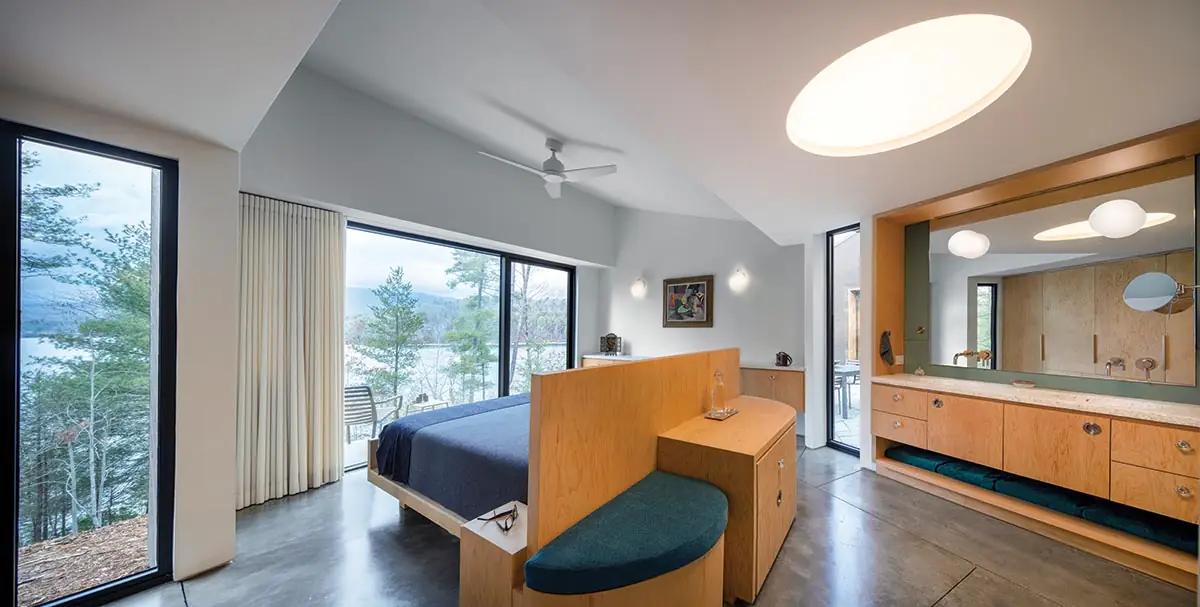
The main bedroom has its own terrace and relationship to the outdoors. Photo © Paul Warchol
Public functions occupy one side of the main floor, while the clients’ bedroom suite anchors the other. Set between them, the bluestone-paved patio with its single Japanese maple tree offers a carefully composed but casual space to enjoy the air and views. Sliding floor-to-ceiling glass panels open the living room to the outdoor heart of the house, giving the residence an expansive character. “It’s a void that’s as important as the built work,” says Fuller.
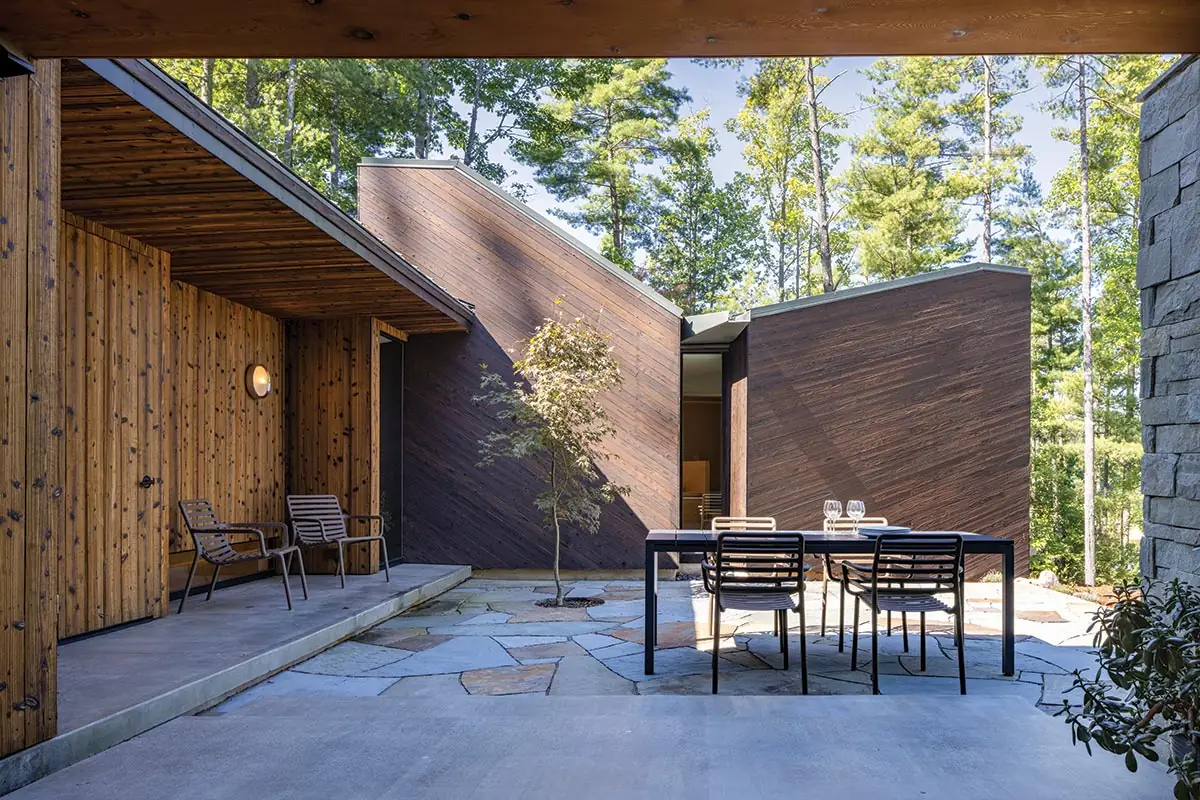
4
Sliding glass panels can open the patio (4) to the living room (5). Photos © Paul Warchol
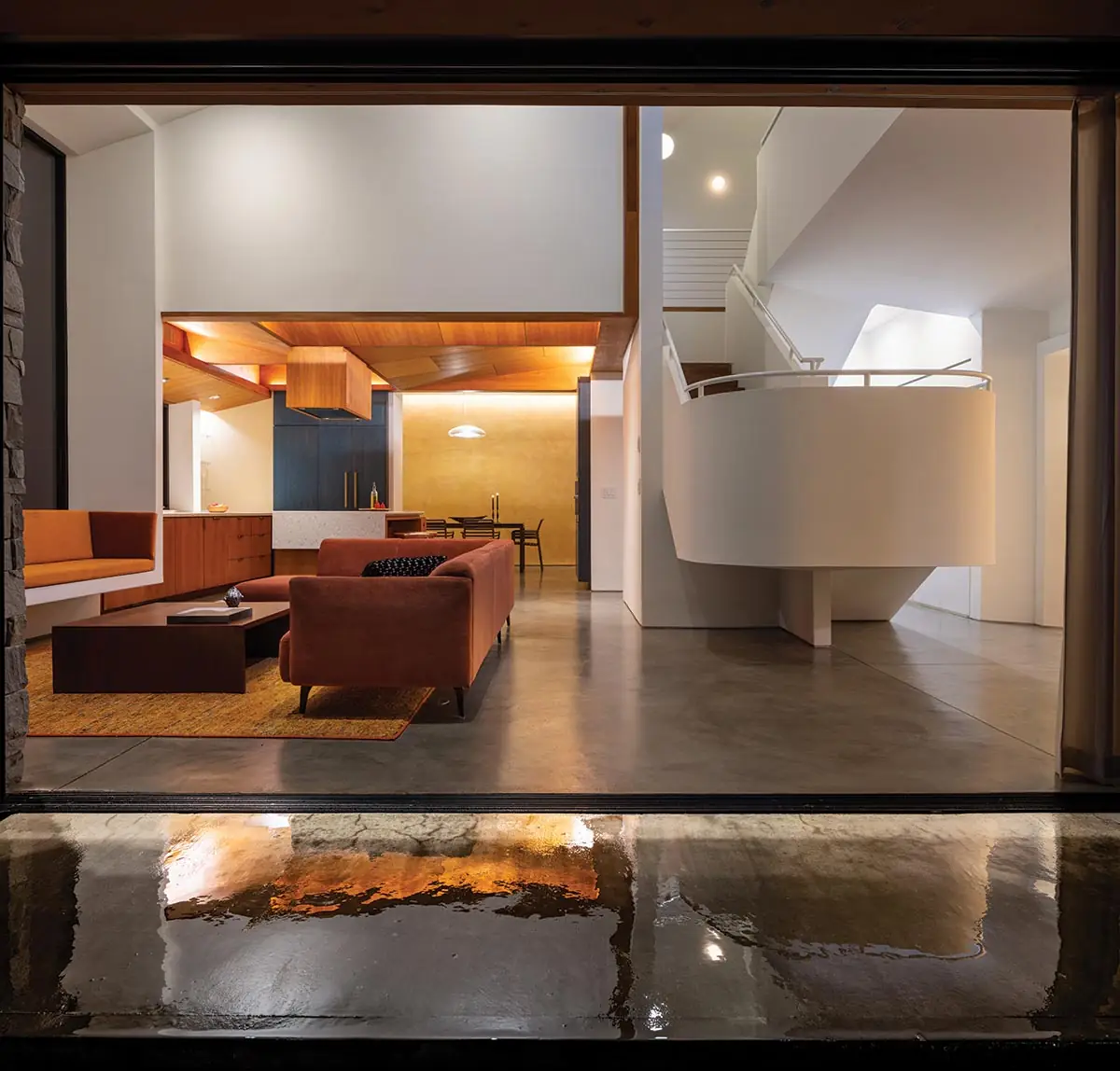
5
The clients, who have family nearby and enjoy entertaining, wanted a house that would work when just the two of them are there but also accommodate large gatherings. “We tried to balance the social and the private throughout the house,” says Michael Overby. So the architects designed the interiors to function in multiple modes—tucking a breakfast nook at one end of the dining room, for example, and inserting elements like banquettes in larger spaces on the upper floor and in the living room.
The clustered forms of the Nebo House create a dialogue between the architecture and its context. By pushing the pieces together and splitting them apart, Fuller and Overby engage them in a relationship that changes with the time of day, the season, and the activity of the people inside.
Click plans to enlarge
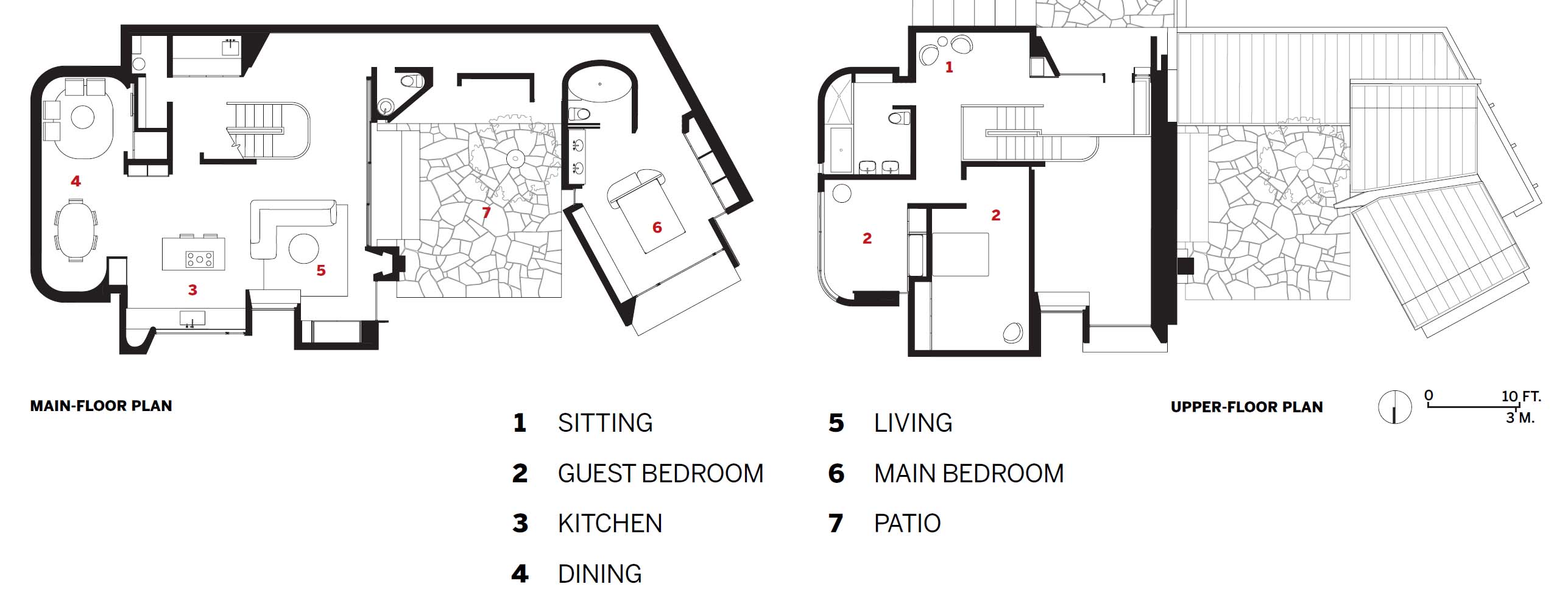
Credits
Architect:
Fuller/Overby Architecture — Emma Fuller, Michael Overby, partners
Engineers:
Nat Oppenheimer, Silman (structural); Mark Cambria, Fusion Systems Engineering (mechanical)
General Contractor:
Cottonwood Development
Client:
Katherine and Ken Overby
Size:
2,750 square feet
Completion Date:
July 2022
Sources
Wood Siding:
Nakamoto Forestry
Stone Steps and Paving:
Hammerhead Stoneworks
Metal Roofing:
Rheinzink; Natural Metal Associates
Metal Window Frames:
Solar Innovations
Cabinetwork and Custom Woodwork:
South Fork Millwork
Clay Walls:
Jim Erskine Masonry
Tadelakt:
Metaphor Finishes
Concrete Countertops:
DEX by Gate
Furniture:
BoConcept (living room)




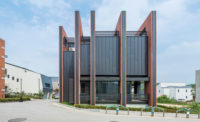
Post a comment to this article
Report Abusive Comment